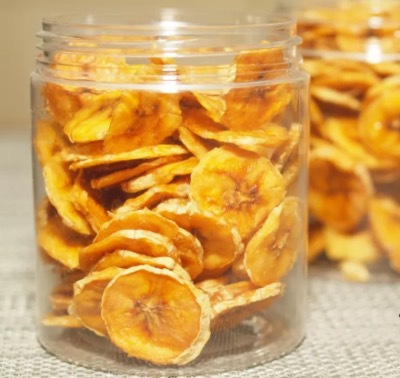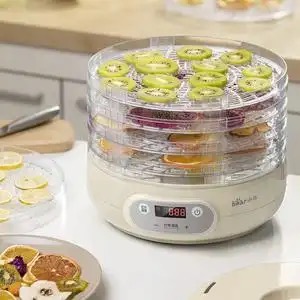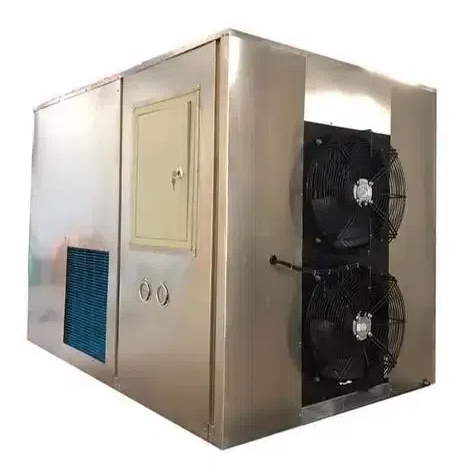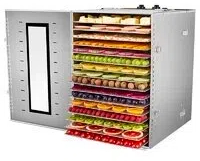
Content Menu
● Introduction to Food Drying Technology
● Understanding Heat Pump Dryers
>> Components of a Heat Pump Dryer
● How Heat Pump Dryers Operate
● Advantages of Heat Pump Dryers
● Applications of Heat Pump Dryers in Food Processing
>> Case Study: Fruit Drying
>> Case Study: Vegetable Drying
● Innovations in Heat Pump Drying Technology
● Future Trends in Heat Pump Drying
● Economic Benefits of Heat Pump Dryers
● Conclusion
● Frequently Asked Questions
>> 1. What does heat pump dryer mean?
>> 2. How does a heat pump dryer preserve nutrients?
>> 3. What types of foods can be dried using heat pump dryers?
>> 4. Are heat pump dryers energy efficient?
>> 5. Can heat pump dryers be used for large-scale operations?
Introduction to Food Drying Technology
Food drying is a crucial process in the food industry, aimed at preserving food products by reducing their moisture content. Among various drying technologies, heat pump dryers have emerged as a leading solution due to their energy efficiency and ability to maintain the quality of dried products. This article explores what heat pump dryers mean for food processing, how they operate, and their benefits in maintaining the nutritional value of food.

Understanding Heat Pump Dryers
A heat pump dryer is an advanced drying system that uses a closed-loop refrigeration cycle to remove moisture from food products. Unlike traditional drying methods that expel hot air, heat pump dryers recycle the air within the system. This not only enhances energy efficiency but also ensures that the drying process is gentle on the food, preserving its nutritional value and flavor.
Components of a Heat Pump Dryer
1. Evaporator: Absorbs heat from the environment and evaporates refrigerant.
2. Compressor: Increases the pressure and temperature of the refrigerant.
3. Condenser: Releases heat to the air, allowing moisture to condense and be removed.
4. Expansion Valve: Regulates the flow of refrigerant back to the evaporator.
This closed-loop system allows for efficient moisture removal while maintaining a consistent temperature, making it ideal for drying various food products.
How Heat Pump Dryers Operate
Heat pump dryers operate on thermodynamic principles, utilizing a refrigeration cycle to extract moisture from food products. The process involves several stages:
1. Heating Air: The dryer heats air using a refrigerant, which absorbs heat from the environment.
2. Drying Process: The warm air is circulated through the drying chamber where it absorbs moisture from the food.
3. Condensation: The humid air is then passed through a condenser where moisture is condensed into water, which is collected and removed.
4. Recycling Air: The now drier air is reheated and recirculated back into the drying chamber.
This continuous process allows for lower drying temperatures, which helps in preserving sensitive nutrients in food products.
Advantages of Heat Pump Dryers
Heat pump dryers offer several benefits over traditional drying methods:
- Energy Efficiency: They consume significantly less energy compared to conventional dryers, making them cost-effective for large-scale operations.
- Nutritional Preservation: The gentle drying process helps retain vitamins and minerals in food products, resulting in healthier dried foods.
- Versatility: Suitable for a wide range of products including fruits, vegetables, herbs, and meats.
- Reduced Environmental Impact: By using less energy and minimizing waste, heat pump dryers contribute to sustainable practices in food processing.
- Consistent Quality: The controlled environment ensures uniform drying, reducing spoilage risks and enhancing product quality.
Applications of Heat Pump Dryers in Food Processing
Heat pump dryers are increasingly being adopted across various sectors of the food industry:
- Fruits and Vegetables: Ideal for drying sensitive items like berries or leafy greens without compromising their color or flavor.
- Herbs and Spices: Retain essential oils and flavors better than traditional methods.
- Meats and Fish: Provide safe dehydration while maintaining texture and taste.
- Snack Foods: Perfect for creating dried snacks that are both healthy and flavorful.

Case Study: Fruit Drying
In fruit processing, heat pump dryers have shown remarkable results. For instance, when drying apples or bananas, traditional methods often lead to browning due to oxidation. However, using a heat pump dryer allows for controlled temperatures that minimize this effect while retaining natural sweetness and color. This results in visually appealing dried fruits that are more marketable.
Case Study: Vegetable Drying
Vegetable drying is another area where heat pump technology excels. Vegetables like carrots or bell peppers can lose their vibrant colors when dried improperly. Heat pump dryers maintain lower temperatures throughout the process, ensuring that vegetables retain their nutritional value as well as their appealing colors.
Innovations in Heat Pump Drying Technology
Recent advancements have led to enhanced features in heat pump dryers:
- Smart Technology Integration: Many modern models come equipped with smart technology allowing users to monitor and control the drying process remotely via mobile apps.
- Advanced Sensors: Newer models can detect moisture levels in real-time, adjusting parameters automatically for optimal results.
- Modular Designs: Customizable units based on specific needs allow businesses to scale their operations efficiently.
- Improved Insulation: Enhanced insulation materials minimize energy loss, improving overall efficiency.
Future Trends in Heat Pump Drying
The future of heat pump drying technology looks promising with ongoing research aimed at improving efficiency further. Innovations such as AI-driven systems may soon optimize drying cycles based on environmental conditions and product types automatically. Additionally, integrating renewable energy sources into these systems could make them even more sustainable.
Economic Benefits of Heat Pump Dryers
Investing in heat pump dryers can lead to significant economic advantages for food processing businesses:
- Lower Operating Costs: Due to their energy efficiency, businesses can expect reduced electricity bills over time.
- Increased Production Capacity: With faster drying times compared to traditional methods, companies can increase output without needing additional resources.
- Market Competitiveness: Offering high-quality dried products can enhance brand reputation and customer loyalty, leading to increased sales.
Conclusion
Heat pump dryers represent a significant advancement in food drying technology. Their energy efficiency, ability to preserve nutritional value, and versatility make them an excellent choice for food manufacturers and wholesalers. As demand for high-quality dried foods continues to rise globally, investing in heat pump dryer technology can provide businesses with a competitive edge in the market.
The combination of innovative design features with economic benefits positions heat pump dryers as an indispensable tool in modern food processing operations. As technology continues to evolve, we can expect even greater efficiencies and capabilities from these systems in the future.

Frequently Asked Questions
1. What does heat pump dryer mean?
A heat pump dryer refers to a type of drying machine that uses a closed-loop refrigeration cycle to remove moisture from food products efficiently while preserving their quality.
2. How does a heat pump dryer preserve nutrients?
By operating at lower temperatures compared to traditional dryers, heat pump dryers minimize nutrient loss during the drying process, helping retain vitamins and minerals in food.
3. What types of foods can be dried using heat pump dryers?
Heat pump dryers are versatile and can be used for fruits, vegetables, herbs, meats, fish, and snack foods among others.
4. Are heat pump dryers energy efficient?
Yes, they consume significantly less energy than conventional drying methods due to their ability to recycle air within the system.
5. Can heat pump dryers be used for large-scale operations?
Absolutely! Heat pump dryers are suitable for both small-scale and large-scale food processing operations due to their efficiency and capacity for customization.












